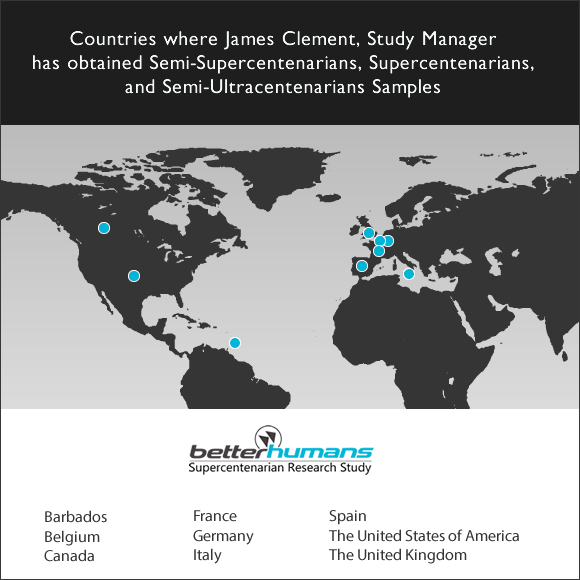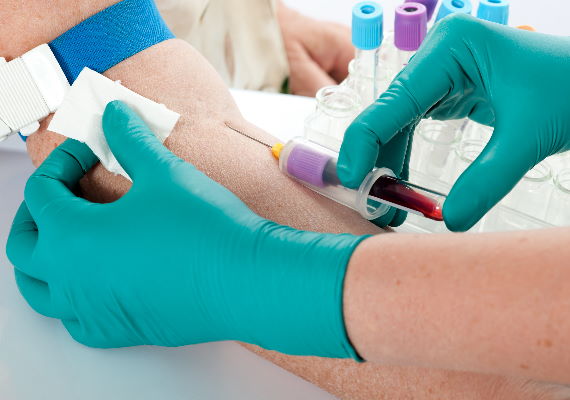Our Research
The Betterhumans Supercentenarian Research Study
The object of the Betterhumans Supercentenarian Research Study study is to compare genomic and molecular data from extremely long-lived individuals among themselves (seeing what’s similar) and with “normal” individuals, especially those who died having known illnesses, such as cancer, cardiovascular diseases, Alzheimer’s, stroke, diabetes, etc. (seeing what’s different).

Heredity of Longevity (it ’s partially in the genes)
- In 1996, James Vaupel published a paper1 showing that across several thousand Danish twins, approximately 20-26% of their longevity could be attributed to genetics. However, the mean age of the twins in that study was only 70 years -- implying that these individuals likely did not have enough “protective genes” to inherit from their parents.
- The same researchers published another study2 of nonagenarians and centenarians, which noted that the discovery of genetic factors associated with exceptional longevity increases with the age of the subjects. This study, and many others, strongly suggest that the genetic component of exceptional longevity gets larger with increasing age, and is especially high for those aged 106 years and older.
- Tom Perls of Boston University has published a study3 suggesting that “the older you are, the healthier you’ve been.”
- Perls’ group the siblings of centenarians have roughly a three-and-a-half times greater chance of reaching 100 years of age than siblings of non-centenarians.
- It has also been stated that the siblings of male supercentenarians have a seventeen times greater chance of living to 100 than that of the general population.
Collection Process

The collection process involves either obtaining spit, blood, or (if deceased) tissue, from the Subject. The spit collection kit takes about 10 to 20 mins. for the Subject to spit about a teaspoon of saliva into one or two tubes. Betterhumans works with third-party researchers to analyze the genomic data it has developed.
Please contact us by email if you would like to obtain a copy of our data for research purposes.

Once the sample is taken, it is anonymized (assigned a proprietary number and all other identifying marks are removed, so as to preserve the privacy of the Subject) and then overnighted to a laboratory where the sample is processed. After a number of samples are accumulated, they are sent to another laboratory for sequencing. Betterhumans currently uses Illumina for its whole-genome sequencing of Supercentenarian samples. It takes approximately three months for the samples to be sequenced and for the biological samples to be turned into data for the Betterhumans team to begin analyzing.

Betterhumans uses both proprietary and public-domain software to analyze the genomic data it collects. For this study, genomic data from the Supercentenarians are compared with data from non-supercentenarians, especially those whose cause of death was known.
If you or a family member would like to learn more or participate in the research study, please fill out the Enrollment Form, or contact us by email.
1. Herskind, Anne. McGue, Matthew. Holm, Niels. Sørensen, Thorkild. Harvald, Bent. Vaupel, James, (1996) The heritability of human longevity: A population-based study of 2872 Danish twin pairs born 1870–1900. Human Genetics. Volume 97, Number 3 (1996), 319-323. doi:10.1007/BF02185763.
2. Matt McGue. James W. Vaupel. Niels Holm. Bent Harvald. (1993) Longevity Is Moderately Heritable in a Sample of Danish Twins Born 1870–1880. J Gerontol. (1993) 48(6): B237-B244. doi:10.1093/geronj/48.6.B237.
3. Hitt R, Young-Xu Y, Perls T. (1999) Centenarians: The older you get, the healthier you’ve been. Lancet, 1999;354 (9179):652.
Participate in the Betterhumans Supercentenarian Research Study!
We are actively seeking participants at least 105 years old and their family members.